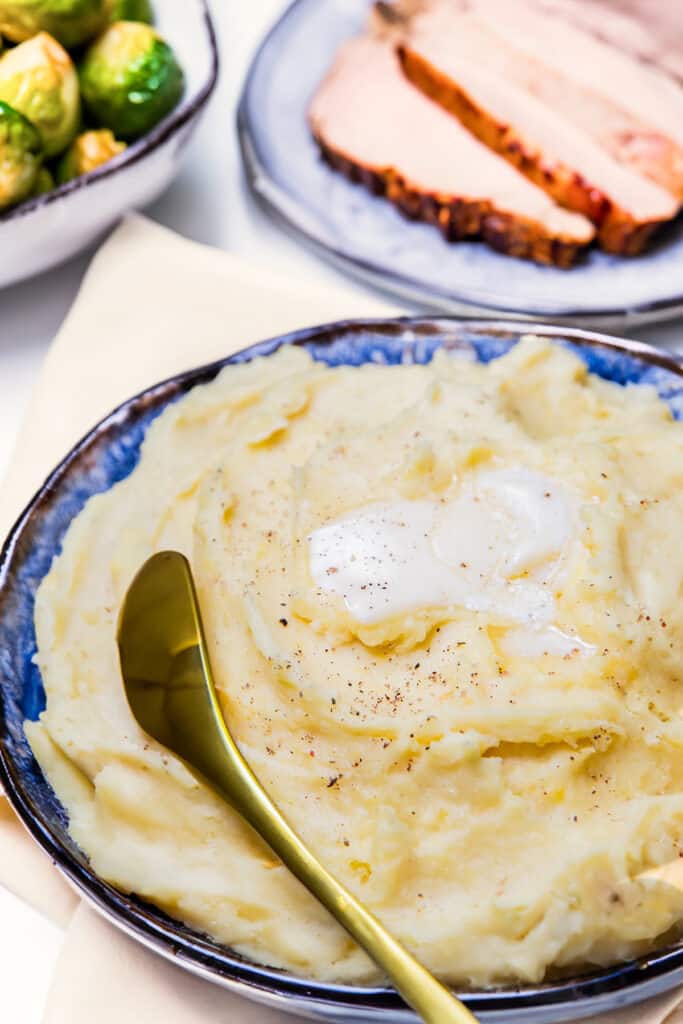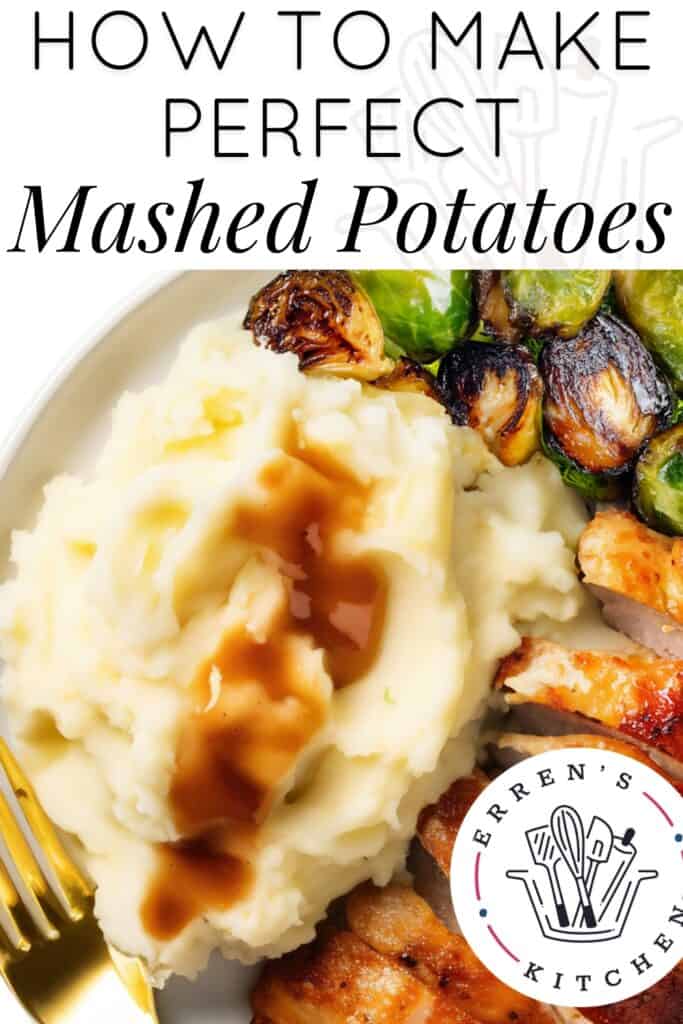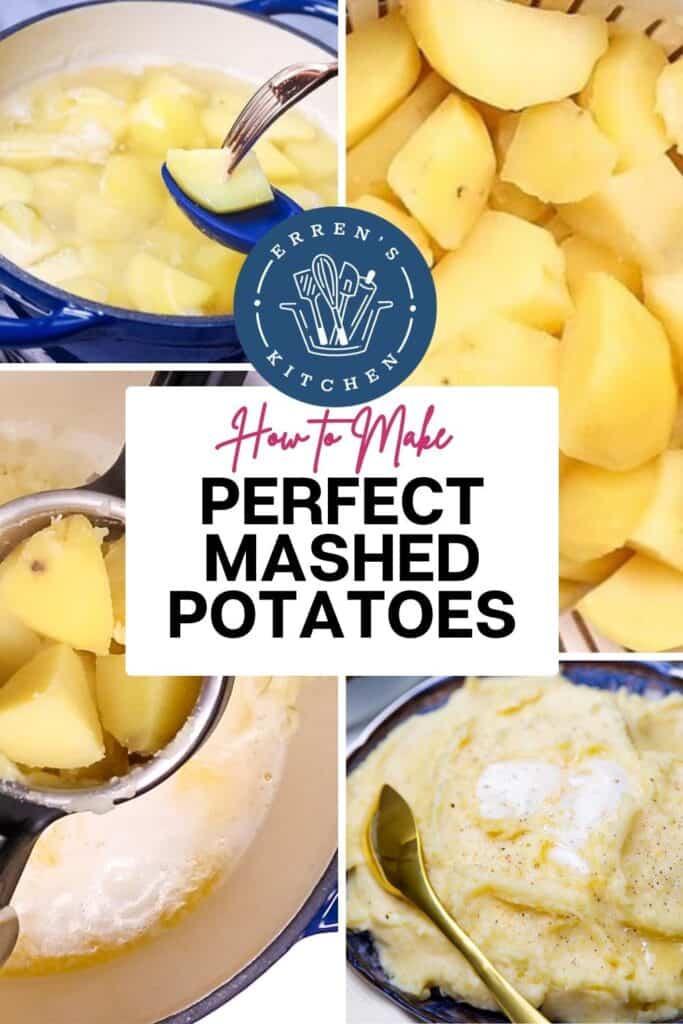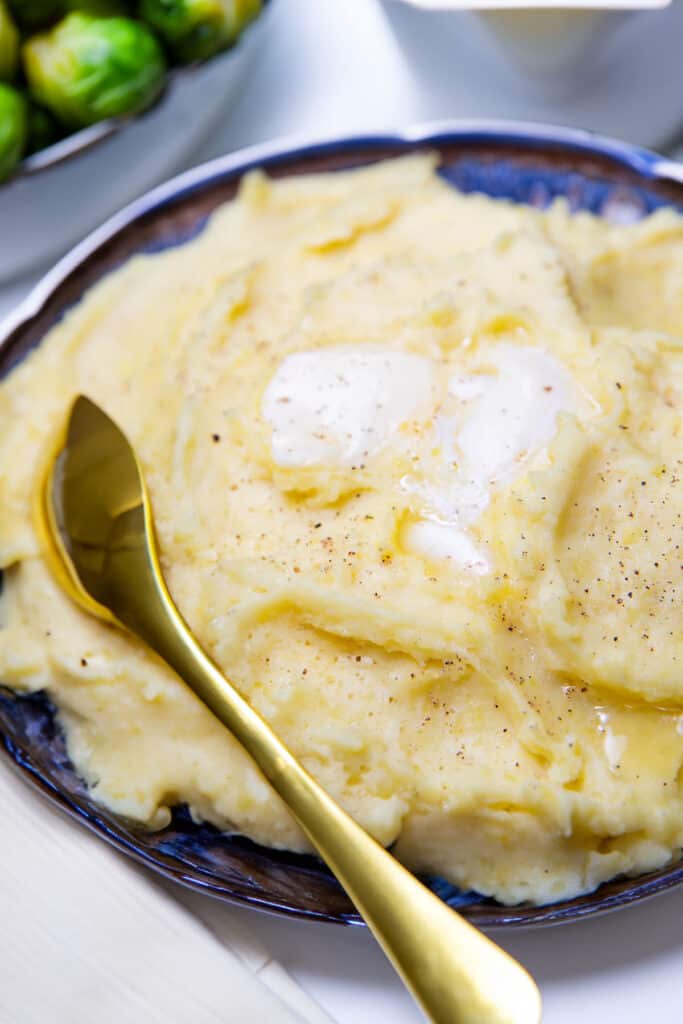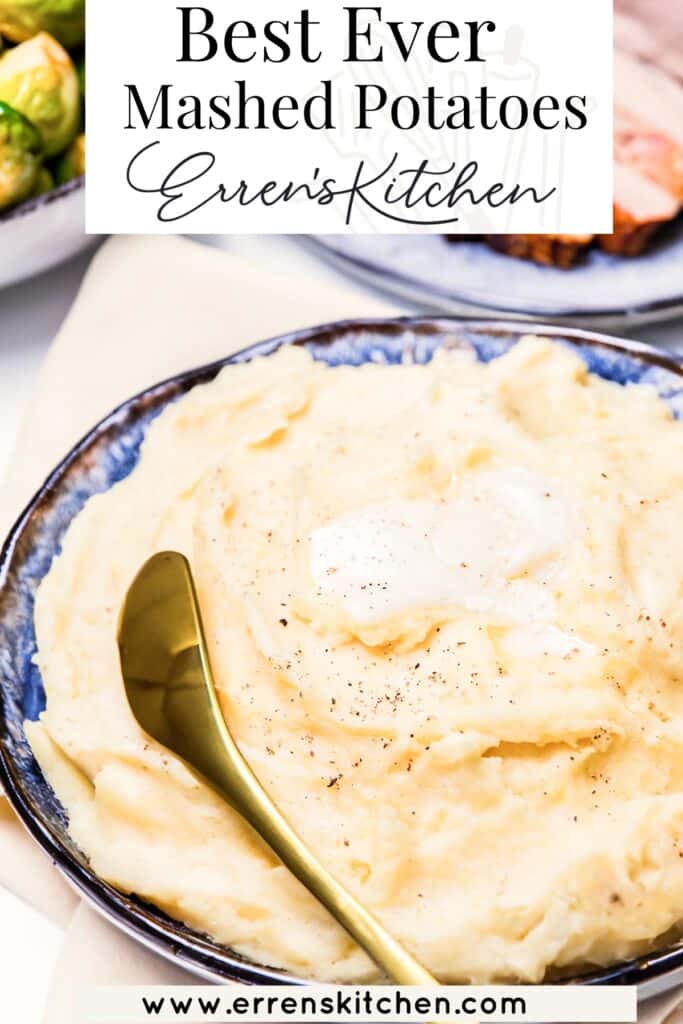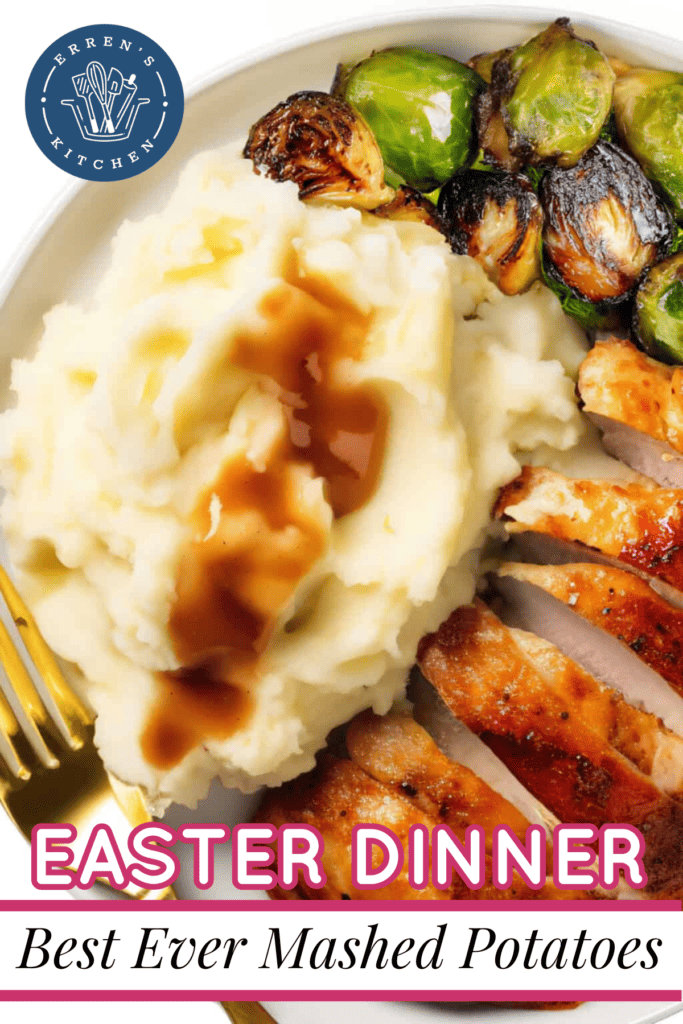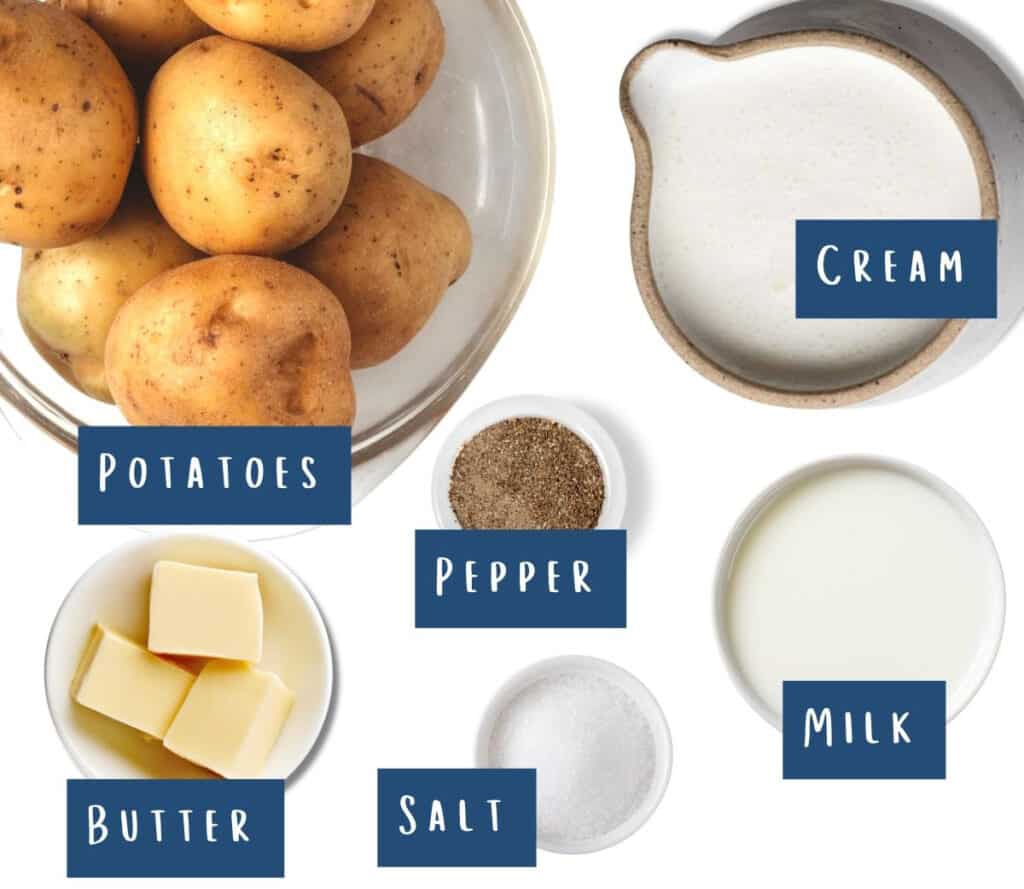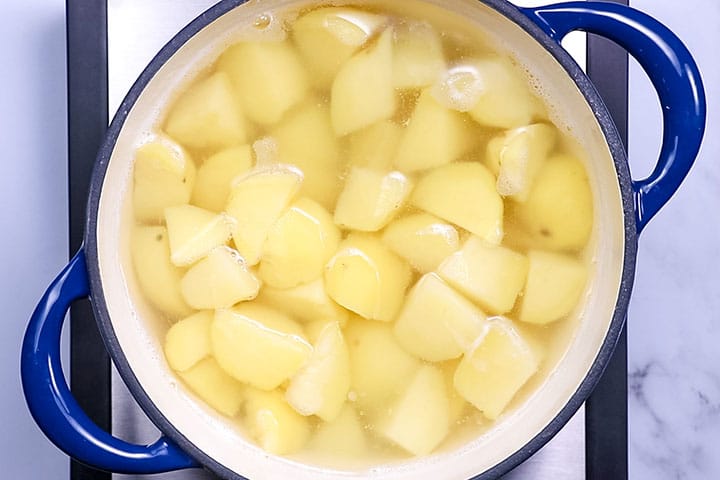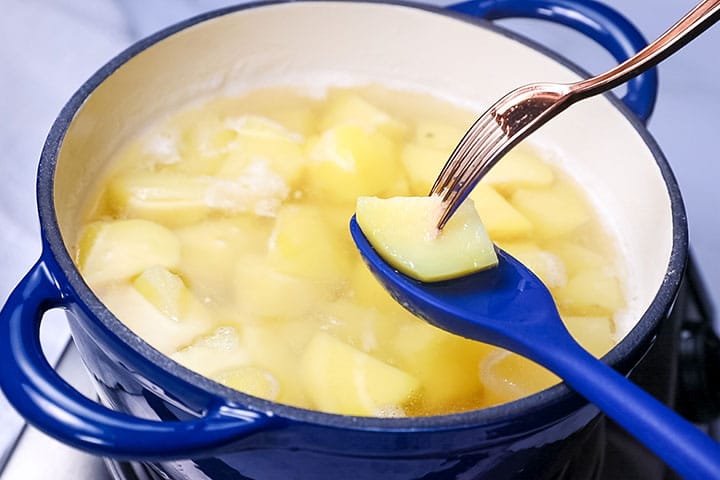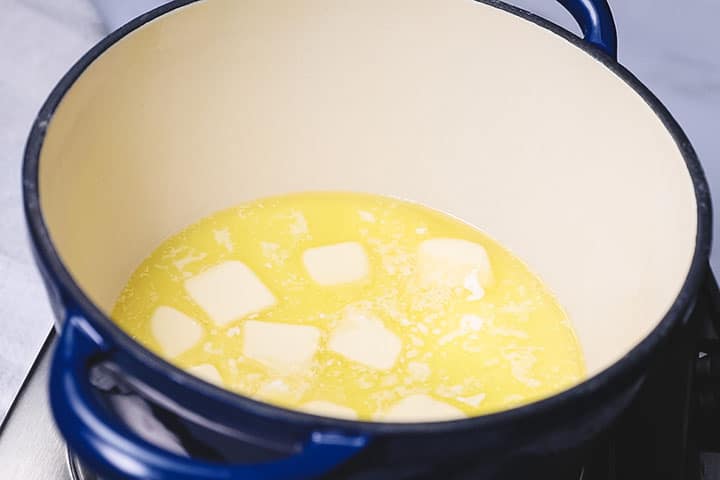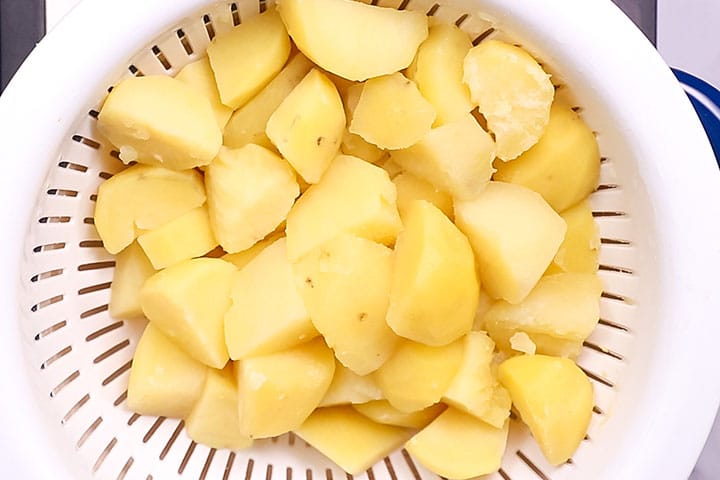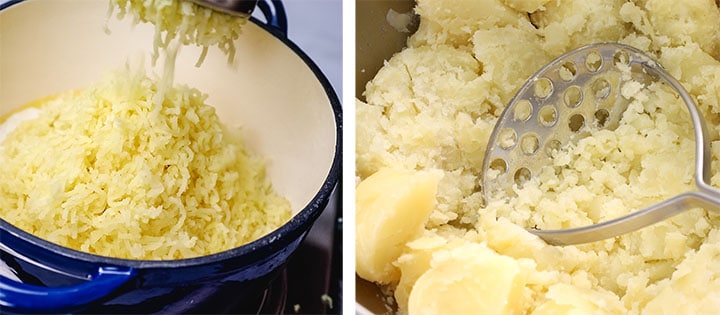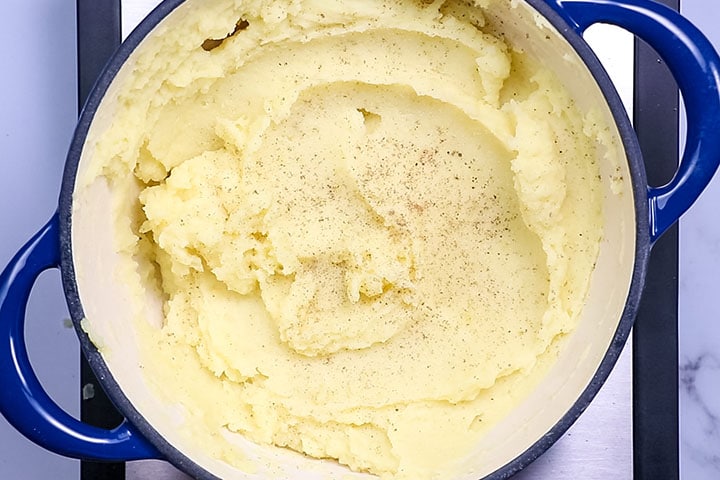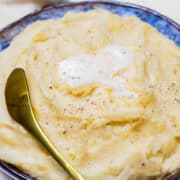Serve this recipe alongside Roasted Brussels Sprouts and Oven Baked Chicken Thighs for a delicious dinner any night of the week. Welcome to the ultimate guide for creating the most delectable mashed potatoes you’ll ever taste! In this post, we’re diving into a classic recipe that transforms simple ingredients into a dish of creamy, buttery perfection. Whether you’re a seasoned cook or just starting out in the kitchen, this “Best Ever Mashed Potatoes” recipe will surely impress. Its fluffy texture and rich flavor make it the perfect side dish for any meal, from cozy family dinners to festive holiday feasts. Let’s begin this journey to mastering the art of making the perfect mashed potatoes! Look for varieties that are either high in starch or offer a good balance of starch and waxiness for creaminess and flavor. Some choices include Russet and Yukon Gold potatoes in the US, Maris Piper, and King Edward Potatoes in the UK and Europe, and Sebagos in Australia. Butter: Unsalted butter is preferred as it allows you to control the saltiness of your dish.Substitutions: For a vegan option, use a plant-based butter substitute. Salted butter can also be used, but the additional salt added later can be reduced. Half-and-Half: This adds creaminess without being too heavy.Substitutions: You can use a mixture of milk and heavy cream (equal parts) as an alternative. For a lighter version, use whole milk. If you’re outside the U.S. and don’t have access to half-and-half for your mashed potatoes, a great substitute is to mix equal parts of whole milk and light cream or single cream, which replicates its fat content and creaminess. You can also use whole milk alone for a lighter or richer texture. Mix three parts milk to one part heavy or double cream. If you need a non-dairy alternative, full-fat unsweetened coconut milk or rich almond milk are good options, though they will slightly alter the flavor and texture. Milk: Whole milk is recommended for its richness.Substitutions: Skim or 2% milk can be used as a lower-fat option. Plant-based milks like almond or soy milk are suitable for dairy-free versions, though they may alter the flavor slightly. Salt: Regular table salt, kosher, or sea salt works well for seasoning the cooking water and the mashed potatoes.Substitutions: Kosher salt is a good alternative, but consider its larger granules when measuring. Black Pepper: Freshly ground pepper offers the best flavor.Substitutions: Pre-ground black pepper can be used if freshly ground is unavailable.
Step by Step Instructions
Preparing The Potatoes
Begin by peeling 3 pounds (1.36 kg) of Russet or Yukon Gold potatoes. These types of potatoes make your mashed potatoes fluffy and creamy. Next, cut the potatoes into evenly sized chunks, roughly 1 to 2 inches (2.5 to 5 cm) in size. This ensures they cook evenly.
Cooking The Potatoes
Bring the water to a boil over high heat. Once boiling, reduce the heat to medium-high. Let the potatoes cook for about 10 to 15 minutes. They are done when you can easily pierce them with a fork.
Preparing The Cream, Milk & Butter
While the potatoes are cooking, take another pot. In it, gently heat 8 tablespoons (113 grams) of unsalted butter, ¼ cup (60 ml) of half-and-half, and ¾ cup (180 ml) of milk. Do this over low heat to avoid boiling the mixture.
Draining Potatoes
Carefully drain out all of the water.
Mashing The Potatoes
Add the warmed half-and-half mixture to the pot in which you cooked the potatoes with 2 teaspoons of sea salt and the butter. Then, mash the potatoes until they are smooth using a potato masher or ricer. Add more butter or half and half a little at a time until it reaches your desired consistency and creaminess. Taste for seasoning, and season to taste. Serve and enjoy every last bite. To Make them days ahead: Store in an airtight container for up to three days in the fridge. Reheat from chilled, reheat them in the oven on low heat, covered with a lid or foil, for 20 to 30 minutes. When reheating, you may need additional butter or milk to bring them back to the creaminess they had when fresh. Freezing Instructions: Freeze in an airtight, freezer-safe container for up to three months. To defrost, allow them to come up to room temperature before reheating.
Erren’s Kitchen is written and produced for informational intentions only. We are not certified nutritionists, and the nutritional information found on this site has not been assessed or authorized by a nutritionist or the FDA. The nutritional information found in our recipes is offered as an estimate and should not be considered a guarantee or fact. The estimated data is provided as a courtesy and calculated through a third-party online nutritional calculator, spoonacular API. Although we do our best to provide accurate nutritional information, these figures should be considered rough estimates. Many factors, such as brands or products purchased and the nutritional fluctuations that naturally occur in fresh produce, can alter the effectiveness of the nutritional information in any recipe. Furthermore, various online calculators provide different results depending on their particular algorithms and nutrition fact sources. To obtain the most precise nutritional information in a provided recipe, you should calculate the nutritional information with the exact ingredients you are using when preparing the recipe using your preferred nutrition calculator.
